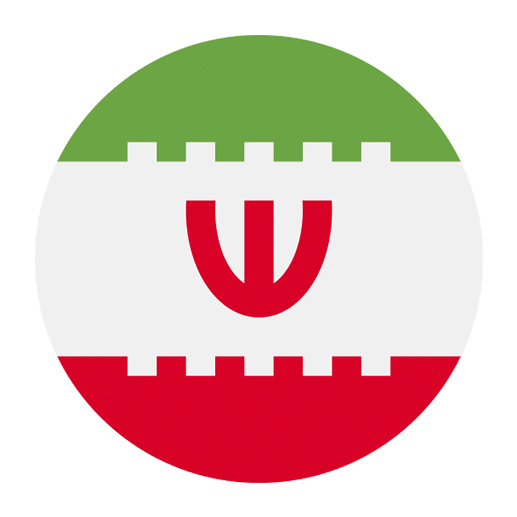In today’s globalized world, social media has become an integral part of daily life. Platforms such as Facebook, Twitter, Instagram, and TikTok are not just avenues for social interaction but also spaces where language evolves and adapts. For languages like Persian, which boast a rich literary history and cultural significance, the impact of social media is multifaceted. This article delves into how social media influences Persian language use, examining both the positive and negative aspects.
Bridging Distances
One of the most evident impacts of social media is its ability to bridge geographical distances. Persian, also known as Farsi, is spoken primarily in Iran, Afghanistan, and Tajikistan. However, significant Persian-speaking communities exist worldwide, from the United States to Europe and beyond. Social media platforms provide these communities with a virtual space where they can connect, share, and maintain their linguistic heritage.
Through platforms like Instagram and Twitter, Persian speakers can engage in real-time conversations, share cultural artifacts, and participate in community-building activities. This connectivity helps preserve the language among diaspora communities, ensuring that younger generations remain fluent and connected to their roots.
Language Evolution and Adaptation
Social media has a profound effect on the way languages evolve. The informal nature of social media communication allows for linguistic experimentation and innovation. For Persian, this means the introduction of new slang, abbreviations, and even the incorporation of foreign words.
Slang and Abbreviations
Social media’s informal tone encourages the use of slang and abbreviations. Persian speakers, especially the younger generation, often adopt and create new slang terms that are quickly disseminated through social networks. For instance, words like “جون” (joon), meaning “dear” or “darling,” are frequently used in comments and posts to convey affection and camaraderie.
Abbreviations are another notable feature. Just as English speakers use “brb” for “be right back,” Persian speakers have their equivalents. For example, “فک” (fekr konam), which means “I think,” is often shortened to “فک” in text messages and online conversations.
Incorporation of Foreign Words
Given the global nature of social media, Persian speakers are frequently exposed to other languages, particularly English. This exposure leads to the incorporation of foreign words into everyday Persian vocabulary. Terms related to technology, entertainment, and lifestyle are often borrowed from English. Words like “like,” “comment,” and “post” are commonly used in their original English forms or slightly adapted to fit Persian phonetics.
While this linguistic borrowing can enrich the language, it also raises concerns about the erosion of Persian vocabulary. Some language purists worry that the overuse of foreign words might dilute the language’s authenticity and cultural significance.
Written Persian: A Blend of Scripts
One intriguing aspect of Persian language use on social media is the blend of scripts. Persian is traditionally written in the Persian script, which is a variant of the Arabic script. However, the Latin alphabet is increasingly used, especially in informal contexts like social media.
Persian Script vs. Latin Alphabet
The Persian script is deeply tied to the language’s identity and history. It is the script used in literature, official documents, and formal communication. However, the Latin alphabet offers ease of typing on standard keyboards and is often used for casual online interactions.
For example, a Persian speaker might write “سلام” (salaam) in the Persian script to greet someone, but in a quick text or tweet, they might opt for “salaam” in the Latin alphabet. This practice, known as “Pinglish” (Persian + English), is widespread among younger generations and the diaspora.
Implications for Language Learning
The use of both scripts presents both opportunities and challenges for language learners. On one hand, exposure to Pinglish can make Persian more accessible to those who are already familiar with the Latin alphabet. On the other hand, it may hinder the learning of the traditional script, which is essential for reading and writing in more formal contexts.
Preserving Persian Literature and Poetry
Persian literature and poetry are cornerstones of the language’s cultural heritage. Social media platforms offer new ways to preserve and promote this rich literary tradition.
Literary Communities
Platforms like Instagram and Facebook host numerous literary communities where enthusiasts share poems, discuss literary works, and celebrate famous Persian poets like Hafez, Rumi, and Ferdowsi. These communities not only keep the literary tradition alive but also introduce it to a global audience.
Digital Archives
Social media also facilitates the creation and dissemination of digital archives. Initiatives like the “Persian Literature on Instagram” project aim to digitize and share classical and contemporary Persian literary works. These digital archives make it easier for people worldwide to access and appreciate Persian literature.
The Role of Influencers and Content Creators
Influencers and content creators play a significant role in shaping language use on social media. In the Persian-speaking world, numerous influencers have garnered large followings by creating content in Persian. These influencers range from fashion bloggers and comedians to educators and activists.
Language Standardization
Influencers often act as de facto language standardizers. Their language use, including slang, idioms, and even pronunciation, can become trends that are emulated by their followers. This phenomenon can lead to the standardization of certain linguistic features across different Persian-speaking communities.
Educational Content
Many influencers also create educational content that promotes the Persian language. For example, language instructors use platforms like YouTube to teach Persian grammar, vocabulary, and pronunciation. These resources are invaluable for both native speakers looking to refine their language skills and non-native speakers aiming to learn Persian.
Challenges and Concerns
While social media has numerous benefits for Persian language use, it also presents challenges and concerns.
Language Dilution
One of the primary concerns is language dilution. The frequent use of foreign words and the informal nature of social media communication can lead to a dilution of the Persian language. Language purists worry that this trend might erode the language’s richness and cultural depth.
Script Discrepancy
The use of the Latin alphabet for writing Persian on social media can create a discrepancy between spoken and written language. This practice might hinder the learning of the traditional Persian script, which is essential for reading classical literature and formal texts.
Quality of Language
The brevity and immediacy of social media communication can sometimes compromise the quality of language. Grammatical errors, misspellings, and improper usage are common in social media posts and messages. Over time, these mistakes can become normalized, affecting language proficiency.
Conclusion
The impact of social media on Persian language use is a complex and multifaceted phenomenon. On one hand, social media platforms offer unprecedented opportunities for connectivity, linguistic innovation, and the preservation of cultural heritage. They provide a space where Persian speakers worldwide can engage with their language in new and dynamic ways.
On the other hand, the informal nature of social media communication, the incorporation of foreign words, and the use of the Latin alphabet present challenges to the language’s purity and traditional script. These challenges necessitate a balanced approach to language use on social media, one that embraces innovation while preserving the language’s rich cultural and literary heritage.
Ultimately, the future of Persian language use on social media will depend on the collective efforts of its speakers, educators, and influencers. By fostering a conscious and respectful approach to language use, the Persian-speaking community can ensure that their language continues to thrive in the digital age.

